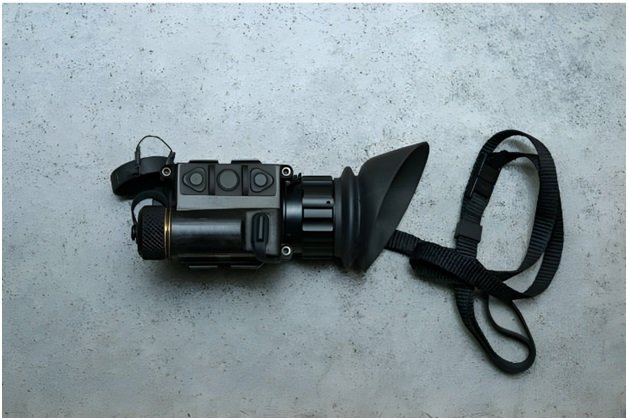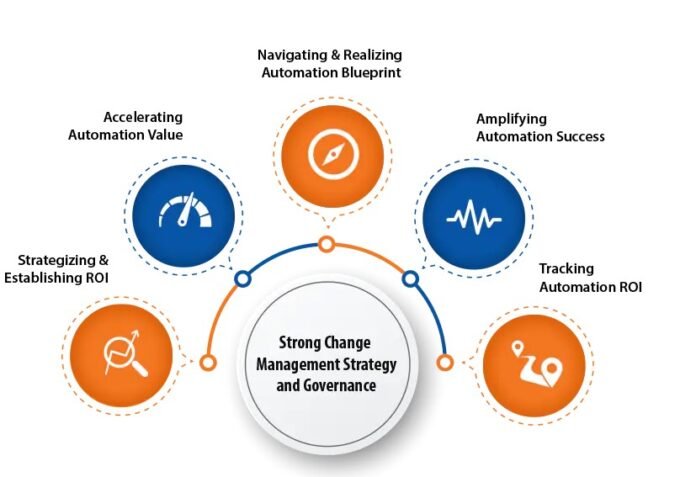Night vision technology has come a long way since its inception, revolutionizing the way we perceive and operate in low-light environments. From its early military applications to its widespread civilian use, night vision has played a pivotal role in enhancing security, enabling navigation, and facilitating various recreational activities.
What Is Night Vision?
Night vision technology allows for the enhancement of visibility in low-light or dark conditions, utilizing various devices and optics such as goggles, scopes, and thermal imaging equipment.
Optical technologies such as image intensification and thermal imaging are crucial components of night vision devices, enabling the amplification of ambient light, or the capturing of heat signatures to create clear images in darkness. These advancements have found applications across several fields, including military and law enforcement for surveillance, navigation, and targeting. Civilian uses include wildlife observation, security, and nighttime recreational activities.
The range of devices and equipment spans from compact, handheld units to sophisticated, mounted systems for a wide spectrum of night vision needs.
History of Night Vision
The history of night vision technology spans its initial military applications to its widespread adoption in civilian use, driven by continuous advancements in the defense industry and extensive research and development efforts.
How Was Night Vision First Used in the Military?
The initial deployment of night vision technology in military operations revolutionized tactical capabilities, offering significant advantages in urban warfare scenarios, surveillance, and the detection of concealed targets through enhanced visibility in low-light environments.
This advanced technology has allowed military forces to conduct operations with increased operational effectiveness during nighttime, minimizing the element of surprise from adversaries. Night vision also plays a crucial role in detecting camouflage and hidden threats, providing strategic advantages in asymmetrical warfare. The ability to navigate urban environments with improved visual clarity has enhanced the safety and success of military missions, ultimately bolstering overall operational readiness.
How Does Night Vision Work?
Night vision operates through the utilization of infrared technology and optics to capture and amplify non-visible light from the electromagnetic spectrum, employing techniques such as image intensification and digital imaging to enhance visibility in low-light conditions.
This technology relies on infrared sensors to detect thermal radiation emitted by objects in the environment. The captured infrared light is then processed to create a visible image, allowing for improved perception of surroundings in low-ambient light situations. Image intensification further enhances the available light, while digital imaging processes refine and display the collected data in real time, culminating in an advanced and effective method for night vision.
What Are the Different Types of Night Vision Devices?
Night vision devices encompass a diverse range of equipment, including goggles, scopes, binoculars, monoculars, and specialized weapon sights, designed to offer varying levels of visibility enhancement and image resolution for military, civilian, and consumer applications.
These devices utilize different technologies such as thermal imaging, image intensification, and infrared illumination to provide users with the ability to see in low-light or completely dark conditions. Goggles are versatile and commonly used by military and law enforcement personnel, while night vision scopes and binoculars offer long-range visibility. Monoculars are popular among civilians for outdoor activities, and specialized weapon sights enhance aiming accuracy in low-light conditions, making them valuable for hunters and professional marksmen.
Benefits of Night Vision
Night vision technology offers a multitude of benefits, including enhanced security and surveillance capabilities, improved navigation and target acquisition, increased visibility in low-light environments, long-range detection capabilities, and image enhancement in diverse environmental conditions.
Enhanced Security and Surveillance
Night vision technology has become an indispensable tool in various security and surveillance applications.
It plays a crucial role in enhancing law enforcement and public safety by providing clear visibility in low light or complete darkness. Advanced imaging sensors and display screens are used to capture and display real-time images, allowing security operations to effectively monitor and track potential threats. Whether it’s covert operations, border patrol, or outdoor perimeter security, night vision technology enables security personnel to detect and respond to activities that may pose a risk.
The integration of thermal imaging and infrared technology further enhances the capabilities of night vision for security and surveillance purposes.
Improved Navigation and Targeting
Night vision technology has revolutionized the way we navigate and target in low light or darkness.
It plays a crucial role in vehicle navigation by providing clear images of the surroundings, allowing drivers to anticipate obstacles and safely maneuver through challenging terrain. In terms of target acquisition, night vision enhances the ability to identify and engage threats, aiding military and law enforcement personnel in their missions.
The use of image processing techniques enhances the clarity and detail of the captured images, while advanced reticle systems further optimize accuracy and precision in aiming. The tactical benefits of night vision technology cannot be overstated, providing a significant advantage in a wide range of scenarios, from military operations to law enforcement and security applications.
Increased Safety in Low Light Situations
Night vision technology significantly enhances safety and visibility in low-light scenarios, addressing diverse environmental conditions and offering critical support for personal security, as well as aiding in the detection of concealed or camouflaged threats.
It provides individuals with the ability to navigate through dimly lit areas, reducing the risk of potential accidents and ensuring a heightened sense of awareness in various outdoor settings. The adaptability of night vision technology facilitates its effective use in different natural environments, such as forests, deserts, and urban landscapes, thereby presenting a valuable tool for individuals seeking to maintain a secure and informed presence in challenging or unfamiliar surroundings.
Night Vision in Civilian Use
Night vision technology has found diverse applications in civilian use, ranging from hunting and wildlife observation to outdoor activities, game hunting, and wildlife monitoring, offering enhanced visibility and safety in low-light environments.
Hunting and Wildlife Observation
Night vision devices have become invaluable tools for hunting enthusiasts and wildlife observers, enabling enhanced visibility, and conservation efforts, and aiding in the detection of camouflaged wildlife in natural environments.
These devices have revolutionized the way hunters and wildlife enthusiasts interact with their surroundings, as they allow for extended periods of observation during low light conditions. Night vision technology has greatly contributed to wildlife conservation efforts by providing biologists and researchers with the means to monitor and study animal behavior without disturbing their natural habitat. Night vision aids in the detection of concealed animals, offering a non-invasive approach to studying and protecting endangered species in the wild.
Search and Rescue Operations
Night vision technology plays a vital role in search and rescue operations, emergency response, and disaster recovery efforts, providing critical support for personnel safety and the efficient identification of individuals in challenging conditions.
The use of night vision technology enables responders to navigate through low-light or dark environments, allowing them to locate and assist individuals who are in distress. When deployed during disaster recovery efforts, it aids in identifying survivors and assessing the extent of the damage even in the absence of natural light.
From a personal security standpoint, night vision technology empowers individuals to enhance their safety and awareness in low-light situations, thereby contributing to overall emergency preparedness.
Recreational Activities
Night vision technology enhances the experience of various recreational activities such as camping, fishing, boating, and nature exploration, allowing participants to safely navigate and observe their surroundings in low-light conditions.
It provides a unique opportunity to witness nocturnal wildlife and observe their behaviors without disturbing their natural habitat. For camping enthusiasts, night vision enables the identification of potential hazards and wildlife encounters, enhancing safety and providing a deeper connection to the natural environment. Anglers benefit from night vision to locate fishing spots and observe underwater activity, while boaters can safely navigate waterways, anchor in unfamiliar areas, and enjoy nighttime cruises with improved visibility. This technology truly amplifies the enjoyment and safety of outdoor recreational pursuits.
Concerns and Controversies Surrounding Night Vision
While night vision technology offers numerous benefits, it is also accompanied by concerns and controversies, including privacy considerations, potential misuse, and associations with illegal activities, posing challenges to public safety and ethical usage.
Privacy Concerns
The use of night vision technology raises pressing privacy concerns, particularly in the context of surveillance operations, counterterrorism activities, and border security, prompting debates on the ethical and legal boundaries of its applications.
Night vision technology enables enhanced nighttime visibility, allowing for covert surveillance and monitoring in various settings. The potential for unwarranted intrusion into individuals’ privacy is a matter of significant concern.
The use of night vision technology in border security and counterterrorism efforts has sparked discussions about the balance between national security imperatives and individual privacy rights, highlighting the need for transparent and accountable practices in deploying such advanced surveillance tools.
Misuse and Illegal Activities
The potential for misuse of night vision technology in illegal activities has raised substantial concerns for law enforcement agencies and private security firms, necessitating regulatory measures to prevent unauthorized and illicit usage.
Such misuse of night vision technology poses significant challenges for law enforcement, as it enables criminals to operate stealthily under the cover of darkness, increasing the complexities of surveillance and apprehension. The unauthorized use of night vision technology by individuals or groups for illegal activities threatens public safety and security. Regulatory controls must be implemented to curb the illicit use of this advanced technology, ensuring its responsible and lawful application in safeguarding communities from potential harm.
The Future of Night Vision Technology
The future of night vision technology holds promising advancements and innovation, driven by evolving industry trends, technology transfer initiatives, expanding commercial applications, and ongoing research and development endeavors. Steele Industries, an industry leader in revolutionizing the lead time associated with night vision devices, plays a crucial role in shaping this future with its dedication to advancing night vision technology and meeting the evolving needs of military and civilian users alike.
Advancements in Infrared Technology
The ongoing advancements in infrared technology are shaping the future landscape of night vision, marked by collaborations within the defense industry, government contracts, and innovations in product design to enhance performance and reliability.
This evolution has not only transformed the capabilities of night vision devices but has also significantly influenced military operations, surveillance systems, and law enforcement strategies. The integration of advanced infrared sensors into defense contracts has led to the development of cutting-edge night vision equipment, offering enhanced detection range, improved image resolution, and better adaptability to various environmental conditions.
The seamless integration of infrared technology into product design has resulted in more compact and lightweight devices, empowering soldiers and security personnel with greater mobility and operational effectiveness in low-light and no-light scenarios.
Integration with Other Technologies
The integration of night vision technology with other advanced systems, including image processing algorithms, protective eyewear, and surveillance platforms, is poised to enhance its efficacy and expand its applications across diverse domains and industries.
This convergence of technologies allows for enhanced visual perception in low-light or nighttime conditions, providing improved situational awareness for military operations, law enforcement activities, and civilian security applications. When integrated with image processing algorithms, night vision technology can offer augmented image clarity and detail, enabling precise object recognition and target tracking. By incorporating protective eyewear, such as advanced goggles and glasses, the user experience is heightened, ensuring comfort and safety during prolonged use. Integration with surveillance platforms enables seamless data integration and real-time monitoring, further bolstering the utility of night vision technology in various operational contexts.
The potential cross-industry applications of this integrated technology are extensive, ranging from defense and security to industrial inspections, wildlife conservation, and search and rescue operations.








